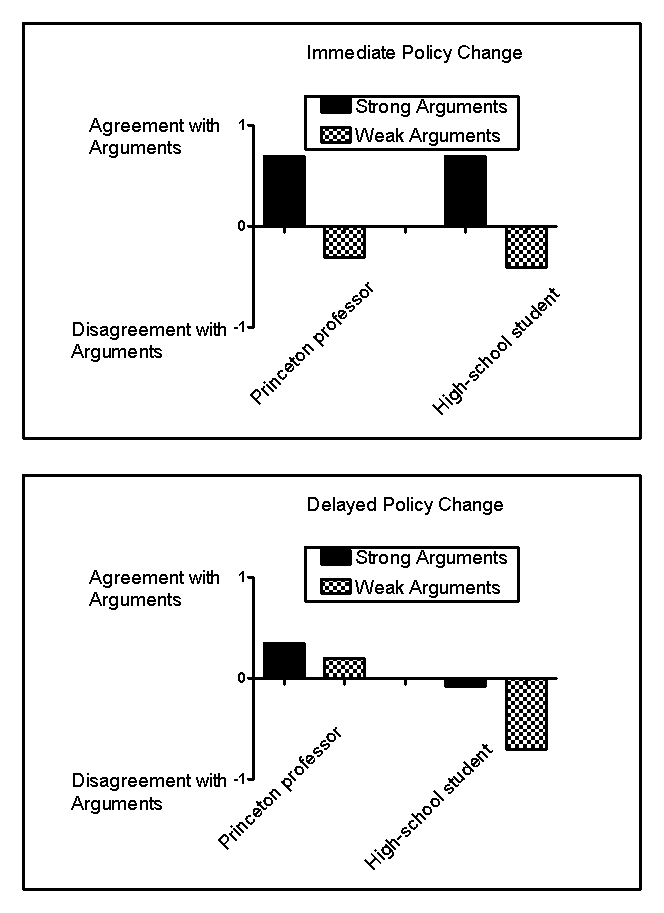Use the following to answer questions
Scenario II
The following scenario contains fabricated results consistent with the following study:
Petty,R.E. ,Cacioppo,J.T. ,& Goldman,R.(1981) .Personal involvement as a determinant of argument-based persuasion.Journal of Personality and Social Psychology,41,847-855.
Every day,consumers are exposed to scientifically based sales,marketing,and public relations strategies designed to influence purchasing decisions,change opinions,or win votes.One common sales strategy is the foot-in-the-door technique,a method that involves first making a smaller request that consumers are likely to grant and then following it with a larger request.Another common strategy is the door-in-the-face technique,which involves making an unreasonably large request that consumers will reject and then following it with a smaller request.When persuasion is necessary,it usually takes one of two forms: heuristic persuasion,which involves an appeal to habits or emotion,and systematic persuasion,which involves an appeal to facts and reason.Often,people will rely more on heuristics-simple shortcuts or "rules of thumb"-to make decisions instead of systematically weighing the evidence.
Petty and colleagues (1981) investigated some of these techniques in college students listening to arguments in favor of their college requiring an institution-level comprehensive final examination for graduation.Some students were led to believe that,if adopted,this policy would take place right away,and some were led to believe that the change would take place in a decade.In addition,some of the students were led to believe that they were listening to an argument from a Princeton professor,and others were led to believe that they were listening to an argument from a high-school student.Finally,some students heard strong arguments in favor of the policy,and some heard weak arguments.Thus,the experiment arranged six groups of students.For example,one group of students heard strong arguments from a high-school student about a far-removed policy change.Figure 13.1 shows fabricated results illustrating the major findings of this experiment.
Figure 13.1 
-(Scenario II) In the Petty and colleagues (1981) experiment,the purpose of manipulating the time that the policy would go into effect was to:
Definitions:
Personality Traits
Enduring characteristics that describe an individual's behavior, thoughts, and emotions.
Values
Core beliefs or standards that guide behavior and decision-making, both at an individual and organizational level.
Utilitarianism
This is an ethical theory that posits the best action is the one that maximizes utility, usually defined as that which produces the greatest well-being of the greatest number of people.
Schwartz's Values Model
Is a theory that identifies universal values that influence people's behavior and categorizes them into a system that explains human motivation.
Q3: People are MOST likely to show:<br>A)in-group favoritism.<br>B)out-group
Q8: Which statement about passionate love is TRUE?<br>A)Passionate
Q36: The three phases of the general adaptation
Q36: The defense mechanism of identification involves unconsciously
Q64: In response to a painful stimulus,high-pain-sensitive individuals
Q94: Which statement about the relationship between religious
Q143: Anthony Philip's homeroom teacher seats her pupils
Q171: Compared with men,women are _ likely to
Q220: Which statement BEST illustrates overestimating the variability
Q233: Behavior that benefits another with the expectation